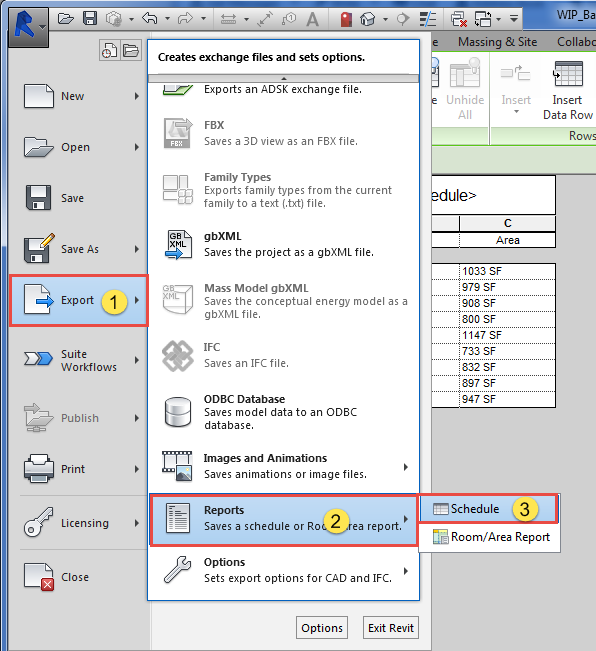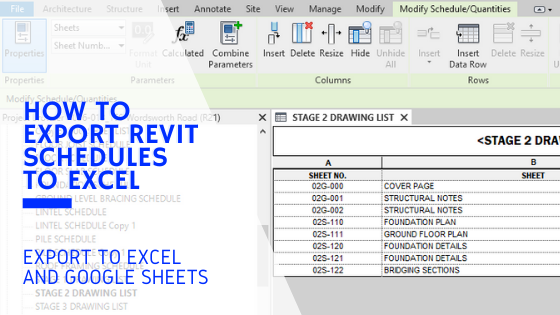Revit Add Ins: Supercharge Your Style and Modeling
Wiki Article
Excel Empowerment: Supercharge Your Revit Projects With Seamless Data Import
Are you wanting to supercharge your Revit tasks? With smooth information import, Excel empowerment can be the secret to unlocking your project's complete possibility. Visualize simplifying the import procedure and maximizing performance via seamless data integration. In this write-up, we will certainly share ideas and tricks for using Master your Revit jobs. Discover how harnessing the Excel-Revit link can result in success in your tasks. Prepare to take your Revit tasks to the following level with Excel empowerment.The Power of Master Revit Projects
You can supercharge your Revit projects by using the power of Excel for seamless data import. Excel is a functional tool that can greatly improve your workflow and efficiency in Revit (revit tool). With Excel, you can easily import and take care of large quantities of information, saving you time and initiativeOne of the crucial benefits of utilizing Master Revit is its ability to manage complex computations and solutions. You can use Excel to do estimations on your data, such as producing amounts, calculating expenses, or assessing performance. When functioning with huge projects that require substantial estimations., this can be especially helpful.

Additionally, Excel offers a easy to use and acquainted interface for dealing with data. You can arrange and manipulate your data in a spread sheet layout, making it easy to check out and modify. This can be particularly valuable when teaming up with others or when you require to make quick changes to your job information.
In addition, Excel allows you to easily import and export data between Revit and other software application applications. You can import data from outside sources into Revit, such as material specs or devices routines, and export data from Revit to Excel for additional analysis or reporting.
Streamlining Data Import With Excel in Revit
Improving data import in Revit becomes easier when using Excel as a tool. With Excel, you have the power to effortlessly import and handle big quantities of information in your Revit jobs. By using the familiar user interface and capability of Excel, you can conserve time and boost efficiency in your workflow.Among the vital benefits of utilizing Excel for data import in Revit is the capacity to quickly organize and manipulate information prior to importing it into your task. With Excel's effective functions, such as sorting, filtering system, and formulas, you can quickly tidy up and style your data to fulfill the demands of your Revit project.
Furthermore, Excel permits you to import data from various resources, such as databases, spread sheets, or even web-based applications. This adaptability gives you the liberty to collect data from various platforms and settle it into one main place for very easy gain access to and management.
On top of that, Excel offers the choice to produce customized templates for information import in Revit. By creating themes tailored to your job's specific demands, you can ensure uniformity and precision in your data import procedure.
Overall, utilizing Excel as a device for data import in Revit enhances the process and improves your performance. Why not take benefit of this powerful tool and supercharge your Revit tasks with seamless data import utilizing Excel?
Taking Full Advantage Of Effectiveness With Seamless Data Assimilation
Make best use of effectiveness by perfectly incorporating and handling data in your operations. Gone are the days of manually inputting information into your system, wasting priceless time and resources. With smooth data integration, you can enhance your processes and supercharge your performance.
Managing information becomes a wind when you have a seamless assimilation system in position. You can conveniently organize and categorize your information, making it simpler to fetch and evaluate. Claim farewell to the days of looking through limitless spread sheets for that a person item of information you need.

useful site
Excel Tips and Tricks for Revit Projects
With these ideas and methods, you'll have the ability to efficiently handle your Revit tasks using Excel. One of the very first points you can do is to use Excel's powerful sorting and filtering system features. This will allow you to swiftly arrange and evaluate your task information. You can arrange components by their names or filter them based on specific criteria, such as their condition or place. An additional valuable feature is the capability to produce formulas in Excel. You can utilize solutions to compute amounts, execute complex calculations, and even automate certain tasks. This can save you a great deal of effort and time in your Revit tasks. In addition, you can make use of Excel to develop custom templates for data import and export. In this manner, you can ensure consistency and accuracy when moving information in between Revit and Excel. Do not neglect concerning Excel's conditional format function. You can use this to highlight certain components or worths based upon particular conditions. This can help you promptly recognize and attend to any type of problems or anomalies in your task information. Generally, grasping these Excel suggestions and tricks will substantially improve your capability to manage and adjust information in your Revit projects.Utilizing the Excel-Revit Link for Success
To maximize your Excel-Revit link, make the most of the capacity to effortlessly integrate and move task information. By using this powerful link, you can supercharge your Revit tasks and improve your operations. With just a couple of simple actions, you can import information from Excel directly right into Revit, conserving you time and guaranteeing precision.One of the essential advantages of the Excel-Revit link is the capability to move information effortlessly. Whether you are importing timetables, room information, and even geometry information, Excel supplies an user-friendly interface that enables you to arrange and manipulate your data prior to importing it right into Revit. This means you can quickly upgrade and change your project information in Excel, and with a few clicks, move those adjustments directly into your Revit design.
Along with moving information, the Excel-Revit link also enables synchronization. This indicates that any kind of adjustments made in Excel can be automatically updated in Revit, guaranteeing that see post your job details is constantly approximately day. This synchronization feature is especially helpful when taking care of huge and intricate tasks, as it removes the demand for manual information access and reduces the risk of mistakes.
Conclusion
So there you have it - the power of Excel in Revit projects can not be undervalued. By enhancing data import and taking full advantage of effectiveness with seamless data integration, you can supercharge your tasks and attain success. With the Excel-Revit link, you have the devices to take your jobs to the next level and attain phenomenal outcomes. So do not wait any type of longer, start harnessing the power of Master your Revit tasks today and unlock a globe of possibilities.You can supercharge your Revit tasks by taking advantage of the power of Excel for seamless information import. With Excel, you have the power to effortlessly import and manage huge amounts of data in your Revit jobs (revit tool). In general, mastering these Excel ideas and tricks will greatly boost your ability to take care of and manipulate information in your Revit projects
Whether you are importing timetables, room information, or even geometry info, Excel provides an easy to use user interface that enables you to arrange and manipulate your information before importing it into Revit. By simplifying data import More Info and making best use of effectiveness via seamless data assimilation, you can supercharge your projects and accomplish success.
Report this wiki page